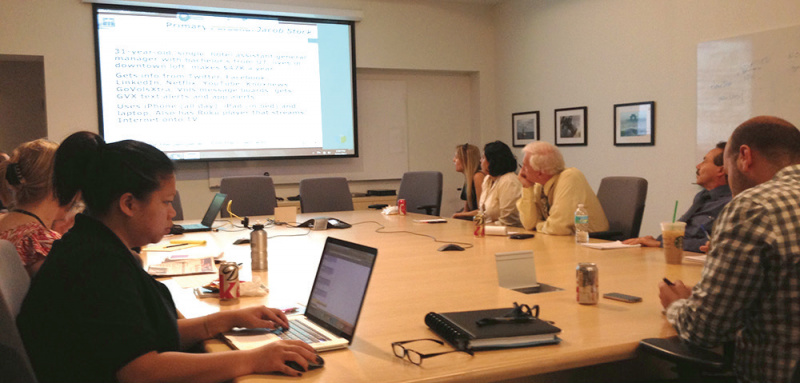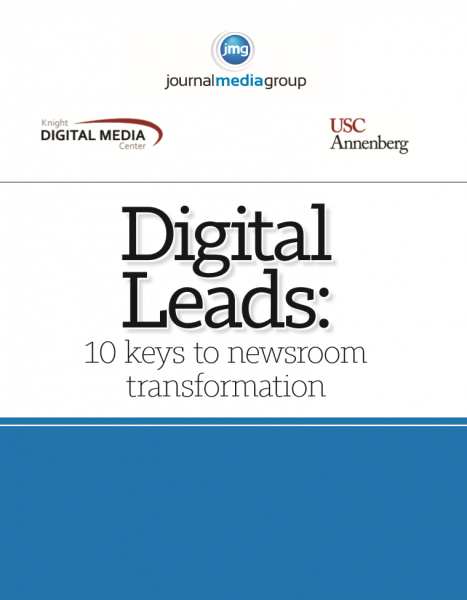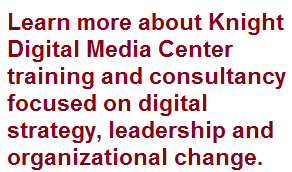Digital Leads: 10 keys to newsroom transformation

3. Staff ownership: Pushing decision-making into the ranks
Summary: To foster staff ownership of changes, newsroom leaders appointed staff committees to determine key coverage priorities based on the research. Top newsroom leaders took on the role of facilitator.
The initiative relied on staff committees in each newsroom to analyze and build on the research and then to make key decisions about franchise coverage.
For the franchise work, editors were asked to appoint committees that were broad-based, reflecting key functions, and to create good lines of communication between the committee and the rest of the newsroom.
The size of the committee depended on the size of the newsroom but most had five to nine members. The number of managers on any committee was limited, generally to one or two, and managers were coached to not take charge.
It generally worked well to have a number of members who were part of the younger demographic groups that would be targeted as well as digital adopters. It also was important to have journalists who had more traditional roles on board.
“I resisted the temptation to select only those who I knew would be true believers in the process, ‘’ John Moore, editor at the Ventura County Star and VCStar.com in Southern California, said. “By mixing those folks with more ‘traditional’ news people (with either a strong ‘beat’ focus or a strong ‘print’ background), I was successful in creating teams that both reflected the varying interest groups in the newsroom and that were able to take what they learned back to their peers in those groups. ”
Mark Tomasik, editor of Treasure Coast Newspapers and TCPalm.com on Florida’s eastern coast, said that in addition to getting the right mix, he found it was important to empower the committee to act and “allow the committee to present and speak for itself with the public and other employees.”
Moore said the leadership of the committee was very important. The effective committee leader had to be collaborative while exerting leadership to keep things on track.
Guidance from the top editor contributed significantly to success of the committees. The more effective editors were active partners to the committees – communicating the strategy across the newsroom, providing support, time and other resources for the committees to do their work, and planning other changes as the initiative progressed.
“During the initial committee work and the creation of the franchise teams, I tried to avoid being too directive. Instead, I tried to look for opportunity to draw out angles of discussion with questions or by seeking unexpressed viewpoints,” said Jack McElroy, editor in Knoxville. “As the planning process proceeded, I tried to provide structure by making sure meetings were happening and deadlines being met.”
The committee process paid off: Stewart said the committee proved to be a key to getting the staff to embrace new ideas and practices. “The sense of ownership at the front lines really came from that,” he said.
Ed Killer, outdoor writer in Treasure Coast and a member of the staff committee, said the committee approach helped the newsroom accept and embrace changes.
“The thought of changing our approach to news was terrifying to many who have worked their entire lives in a print-centric media organization,’’ Killer said. “Veteran journalists were not easy to convince this was going to be a successful approach. I think a greater portion of the newsroom found the changes more comfortable since they were brought forth by a committee of their co-workers. “
Killer said support from Stewart, Tomasik, and then managing editor Mike Canan, was also critical. “It was important for us to know they were behind us, supporting us, yet let us make the choices. That was huge.”
Stewart acknowledged the challenge he was placing in front of his top editors by asking them to facilitate rather than direct. “It’s an unnatural role for an editor, there is no question. But I think it was critical in getting buy in of the organization.”
The more successful editors “made it very clear they were supportive of the process but had enough trust in their people to allow them to drive it. They were also savvy enough to choose the right people,“ he said.
When KDMC recommended the committee approach, Stewart was skeptical. He had seen too many committees fail to produce actionable results. But McLellan, the KDMC program consultant, had seen the power of newsroom committees when she helped more than a dozen newsrooms create in-house training programs during the Knight Newsroom Training Initiative. In that project, the staff committees received careful guidance and their plans focused on achieving well-understood newsroom goals.
“What enabled (the Four Platform committees) to be successful, in contrast to the way I’ve seen committees established, was the framework and support provided to each committee through the process,” Stewart said.








